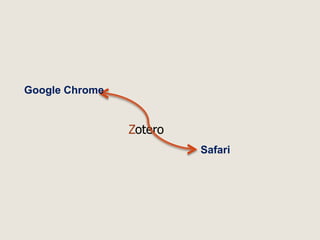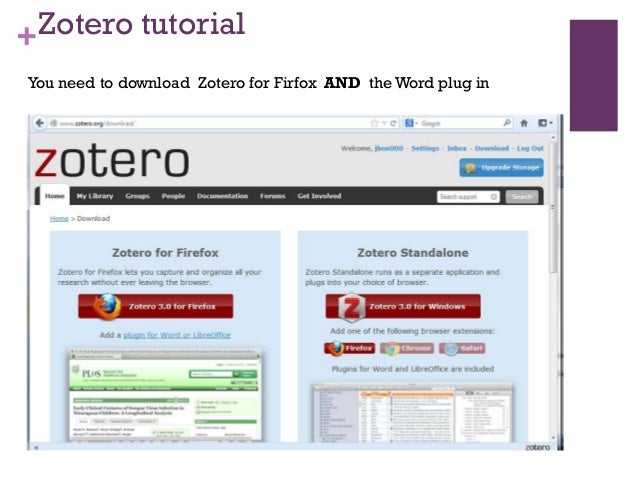

- Zotero chrome tutorial how to#
- Zotero chrome tutorial pdf#
- Zotero chrome tutorial install#
- Zotero chrome tutorial download#
We’ll call the citations you save in Zotero your library, but it is more like a database. a browser “connector” so that you can save to Zotero from your browser.
Zotero chrome tutorial install#
Zotero chrome tutorial how to#
In Part 3: Citations & Bibliographies, you'll learn how to use Zotero to generate citations automatically.Zotero is a research tool that was created for academics, by academics.
Zotero chrome tutorial pdf#
If automatic retrieval fails, you can enter the information manually by right-clicking the PDF and choosing "Create Parent Item," which will give you blank space to fill in.
Zotero chrome tutorial download#
This will add the PDF to your library, and Zotero will automatically attempt to download the bibliographic information associated with the article. Be sure to drag the file into empty space to add it as a new item. If you've already got a collection of PDFs on your computer that you'd like to add to Zotero, you can do this by dragging and dropping the file into the middle pane of the Zotero window. Retrieving Citation Information for a PDF During the process, Zotero makes its own copy of the file, so you can delete the PDF from it's initial location and open the article directly from Zotero in the future (if you want). Zotero will open a dialog box prompting you to locate the PDF associated with this item. Right-click (or cmd-click) on the item you want, then choose "Add Attachment" -> "Attach Stored Copy of File." It's possible to attach a PDF to an article in your library if you already have it downloaded to your computer. Using the magic wand tool or adding an item manually will not automatically import the PDF. In most cases, the Zotero Connector should automatically download the PDF along with an article's citation information, but occasionally this process fails. Zotero has a huge number of templates to choose from. You can type or copy and paste this string into the field, and Zotero will grab the information automatically. The magic wand icon allows you to add items using a unique persistent identifier, like an International Standard Book Number (ISBN), a Digital Object Identifier (DOI), or a PubMed ID number (PMID). Look for the import status box in the upper-right corner of the page. It will also attempt to automatically download article PDFs and other pieces of data if they are available. The Zotero Connector can import items from across the web, including library databases like JSTOR and Web of Science as well as sites like YouTube and Google Scholar, with one click. The icon will change based on the contents of your browser tab. If you installed the Zotero Connector for your web browser in part 1 of this tutorial, you should see Zotero icon on the left or right side of the address bar. The simplest way to add items to your library is by importing from the web. You can have as many collections as you want.

for the same class or even the same assignment, using the "New Collection" button in the Zotero interface. CHeck it out if you can!)Īfter you've installed Zotero and synced it with your account, you're ready to start adding items to your library.įirst, a quick tip on library organization: you can create folders (Zotero calls them "collections") to group together related items, e.g. (Note: this tutorial covers the basics of adding items to your Zotero library, but the video version includes even more helpful tips.


 0 kommentar(er)
0 kommentar(er)
